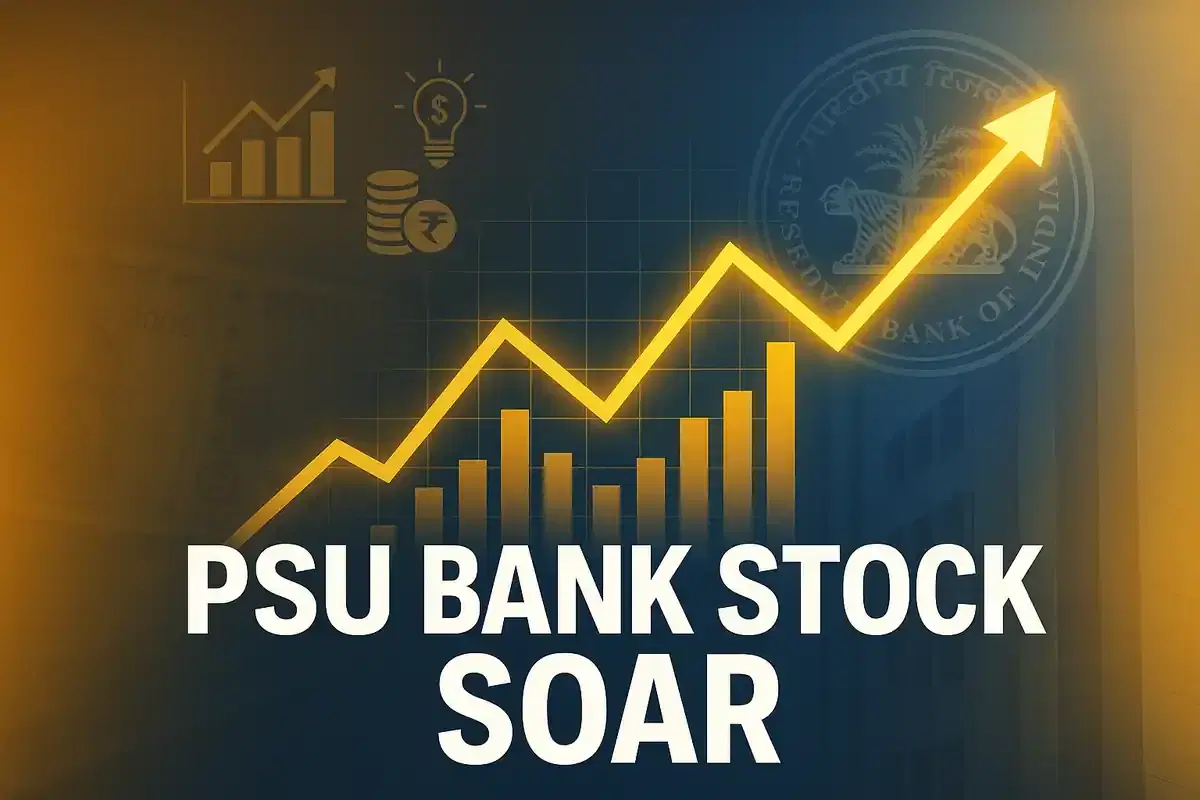PSU Banks Rally on Strong Performance and Potential FII Boost
Banking/Finance
|
29th October 2025, 9:41 AM

▶
Stocks Mentioned :
Short Description :
Detailed Coverage :
Public Sector Undertaking (PSU) banks in India have experienced a significant rally, collectively boosting their market capitalisation by nearly Rs 2.3 lakh crore. The Nifty PSU Bank Index has climbed by almost 20% since August, reaching a new 52-week high and showing a 46% increase from its March lows. The combined market capitalisation of these state-owned lenders is now close to Rs 18 lakh crore. This impressive performance is attributed to several factors, including better asset quality, momentum from government policies, and growing interest from international investors.
Specific banks have seen substantial gains. In the last two months, Indian Bank has returned about 26%, while Bank of India and Canara Bank have posted gains exceeding 20% each. Larger banks like State Bank of India, Punjab National Bank, and Bank of Baroda have also seen increases between 14-16%.
A significant trigger for renewed optimism is the potential increase in the Foreign Institutional Investment (FII) limit for PSU banks from the current 20% to 49%. Nuvama Institutional Equities estimates that this change could attract up to $4 billion in passive inflows, potentially leading to a further 20-30% rally in PSU bank stocks. The government is reportedly in discussions with the Reserve Bank of India regarding this proposal, aiming to maintain at least a 51% majority stake.
Analysts have mixed views on the sustainability of this rally. Some, like Shibani Sircar Kurian of Kotak Mahindra AMC, are positive on select larger PSU banks benefiting from credit growth and improving margins. Others, like Vishnu Kant Upadhyay of Master Capital Services, see breakout patterns suggesting potential new highs, viewing short-term pullbacks as buying opportunities. However, Seshadri Sen of Emkay Global warns that the momentum might fade in FY27 due to expected drops in treasury income and rising operational expenses from new wage agreements, potentially impacting Return on Assets (ROAs) and Return on Equity (ROEs) unless long bond yields remain stable.
Impact This news has a moderate to high potential impact on the Indian stock market, particularly on PSU bank stocks. If the FII limit is raised, it could lead to significant capital inflows, boosting valuations and market sentiment. However, differing analyst opinions highlight potential volatility. The actual impact will depend on policy decisions, foreign investor appetite, and macroeconomic conditions. Rating: 7/10.
Heading: Difficult Terms PSU Banks: Public Sector Undertaking Banks, which are banks where the majority stake is held by the government. Market Capitalisation: The total market value of a company's outstanding shares. Nifty PSU Bank Index: An index that tracks the performance of PSU bank stocks listed on the National Stock Exchange of India. 52-week high: The highest price at which a stock has traded during the past 52 weeks. Foreign Institutional Investment (FII): Investment in a country's assets by investors from another country. Passive Inflows: Investments made by funds that track an index, such as MSCI, when an index constituent changes. MSCI Indices: Standardized indices created by Morgan Stanley Capital International to track the performance of global stock markets. Asset Quality: The financial health of a bank's loan portfolio, indicating the likelihood of borrowers repaying their debts. Policy-led Momentum: Upward price movement in stocks driven by government policies or regulations. Retail Front: The segment of banking services that deals with individual consumers. Margins: The difference between a bank's interest income and its interest expenses. Cost of Deposits: The interest rate a bank pays to depositors for their funds. Liability Franchise: A bank's ability to attract and retain stable, low-cost funding sources (like customer deposits). Valuations: The process of determining the current worth of an asset or company. Moving Averages: A technical analysis indicator that smooths out price data by creating a constantly updated average price. Supply Zones: A price range in a stock chart where selling pressure is expected to overcome buying pressure. Treasury Income: Income generated by a bank from its investments in securities and other financial instruments. Opex Growth: Increase in operating expenses, which include costs like salaries, rent, and administrative expenses. Wage Agreement: A formal contract between employers and employees (or their representatives) regarding wages and working conditions. ROAs (Return on Assets): A profitability ratio that measures how efficiently a company uses its assets to generate profits. ROEs (Return on Equity): A profitability ratio that measures how much profit a company generates with the money shareholders have invested. Long Bond Yields: The interest rate paid on long-term government debt, which can influence investment decisions and economic activity. Tax Collections: The amount of taxes collected by the government.